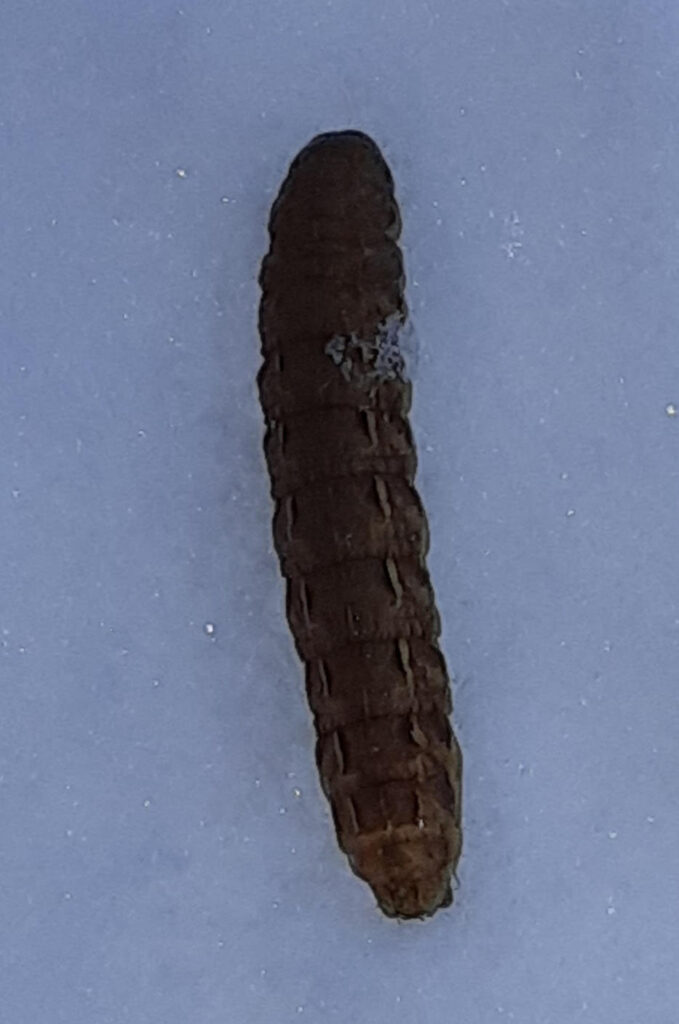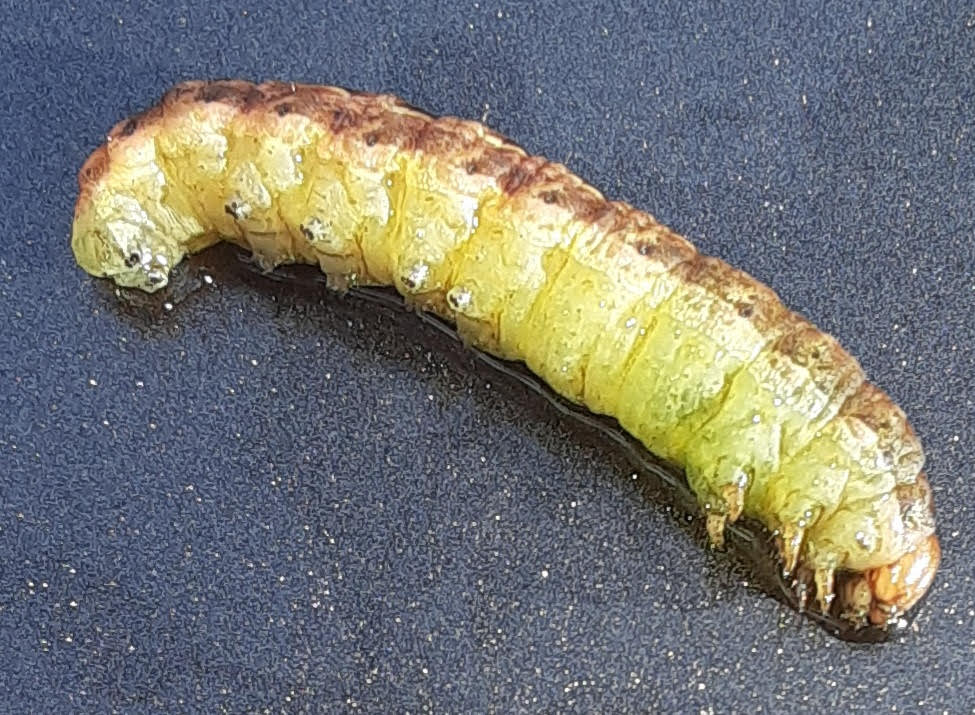By Susan Sprout
Another Latin word in my ever-expanding vocabulary of all things botanical and biological…a place where a creature seeks refuge.
Lots of different animals – insects, amphibians, reptiles, mammals like bats and rodents and bears – require shelters to overwinter. Recently my hibernaculum was in Fort Myers.

We just returned to Pennsylvania in time for a lovely snowy day and a chance, finally, to try out new cross-country skis. Looking down as I glided past a stand of Norway spruce, I discovered an interesting black shape lying on the snow directly below them. Picking it up, I saw it was a fat worm – maybe some kind of spruce budworm. It was stiff as a board and hard as a rock. In my pocket for safe-keeping until I could identify it, the worm warmed up. By the time I skied to the truck and placed it on the hood for a photo shoot, its body had softened up – a lot! It rolled over.

This worm had turned from a hard nugget to a creepy-crawly. Hmmm…Wonder why.
Insects that do not migrate have to do something to avoid freezing to death. Some clump together in rock crevices or bury themselves in plant debris or dirt. My critter, if it is a spruce budworm, spins itself a silky hibernaculum attached to spruce buds as protection.
The heavy snow we had may have plopped down from a branch above, dislodging the worm from its abode. Certain death for it, but happy the bird that could have found it lying there on top of the snow. I intervened.
But, something else must have been going on to keep that worm stiff as a board and hard as a rock. That “something else” is a process called “diapause” which halts an insect’s growth and keeps it in a state of suspended animation.
Insects like budworms can be stimulated to begin diapause by the length of daylight, temperature, and the biochemicals in the plants they consume – all signaling that environmental conditions are about to change. Internally, genetic programming in their tiny brains readies them with their own special bodily changes in hormones, cell chemicals, and enzymes.
These, in turn, stimulate changes in behavior such as searching for suitable overwintering sites. Low metabolism, arrested growth and anti-freeze proteins called cryoprotectants increase the depth of diapause. Tissues and cells can freeze but do not rupture from ice crystals formed from water inside of and around them.
Diapause slowly decreases and its end can occur abruptly when a budworm leaves its hibernaculum in early May.
Unless, of course, it gets dislodged from its hibernaculum and picked up by some crazy two-legger!

